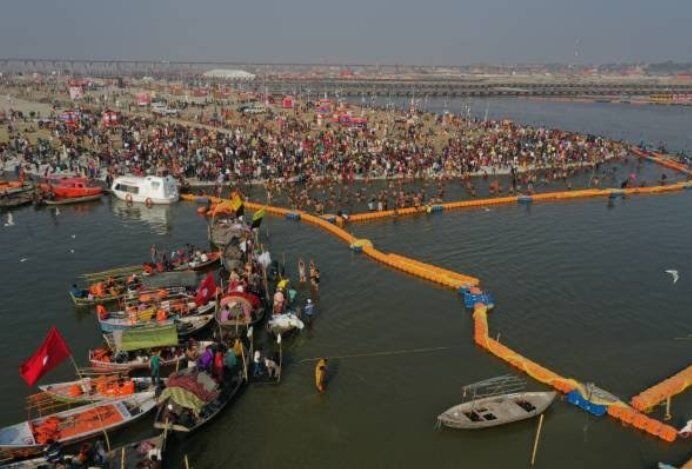Is the Ganges River Finally Clean Enough for Mahakumbh 2025?
Mahakumbh 2025: Improving Ganges water quality through sewage treatment and pollution control.

As Mahakumbh 2025 approaches, preparations in Prayagraj are in full swing. Central to this grand religious event is the Ganges, the sacred river where millions gather to cleanse their sins. While the river's pollution has been a long-standing concern, recent efforts have brought some relief, indicating a significant drop in contamination levels.
A Sacred Tradition Under Threat
The Mahakumbh is a once-in-12-years event where devotees from across the globe converge at the Sangam, the confluence of the Ganga, Yamuna, and the mythical Saraswati. However, decades of untreated sewage, industrial discharge, and agricultural runoff have severely polluted the Ganges, threatening the sanctity of the ritual bath.
Positive Signs of Recovery
Reports from the Uttar Pradesh Pollution Control Board (UPPCB) reveal that bacteria levels in the Ganges at Prayagraj have significantly reduced compared to a decade ago. The total faecal coliform count, which was alarmingly high at 32,000 MPN/ml in 2014, has now dropped to 3,300 MPN/ml at downstream Sangam.
Authorities credit this improvement to:
1. Sewage Treatment Plants (STPs): Ten STPs are now operational in Prayagraj, significantly reducing untreated sewage discharge.
2. Drain Tapping: Almost 90% of the 23 drains in and around Prayagraj have been tapped to prevent effluents from entering the river.
3. Advanced Technology: Geotube technology is filtering solid waste, while ozonization processes are treating bacteria in sewage water.
Challenges Before the Holy Dip
Despite progress, much remains to be done before the Mahakumbh. The bacteria count in many areas still exceeds the permissible limit of 500 MPN/ml for bathing, raising concerns about water safety. Furthermore, not all sewage lines are connected to STPs, leaving gaps in pollution control.
A Call to Protect the Ganges
Environmental experts stress the importance of combining modern interventions with the Ganges’ natural self-cleansing ability. Allowing the river to flow freely and maintaining ecological balance are essential to restoring its purity.
Public participation also plays a critical role. Religious reforms encouraging eco-friendly rituals, minimizing waste dumping, and raising awareness about sustainable practices are vital steps toward preserving the river's sanctity.
Mahakumbh: A Test of Collective Efforts
The Mahakumbh is more than a religious event; it is a testament to India’s cultural heritage and the enduring bond between people and the Ganges. The event offers an opportunity to showcase the progress made in cleaning the river. Officials remain optimistic that with continued efforts, the water quality will meet the standards before the grand fair begins.
As millions prepare to take the holy dip in 2025, the Ganges’ revival will stand as a symbol of collective dedication to preserving faith, culture, and the environment. Let this Mahakumbh not only cleanse the soul but also inspire a renewed commitment to safeguarding the lifeline of India for future generations.


